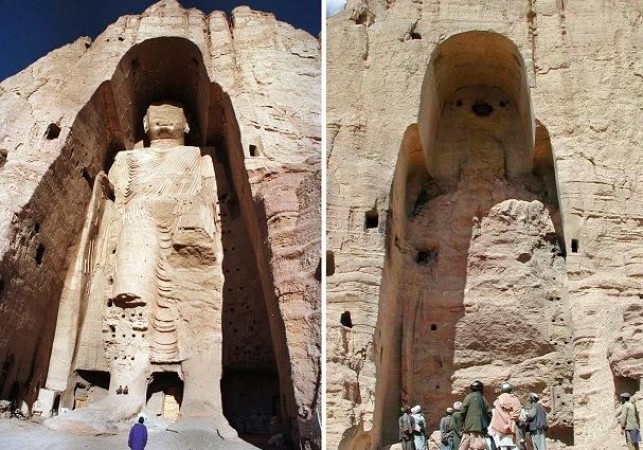
The ancient Buddha statues in Bamiyan, Afghanistan, were created during the 6th century. They were carved into the cliffs of the Bamiyan Valley, which was an important center along the Silk Road, connecting East and West. The statues were a significant representation of the rich Buddhist heritage and cultural exchange that once flourished in the region.
The statues were built during the time when the area was under the rule of the Kushan Empire, which was a vast and influential empire that encompassed parts of Central Asia, South Asia, and the Middle East. The Kushan rulers, who were of Central Asian origin, patronized Buddhism, and the Bamiyan Valley became a prominent Buddhist pilgrimage site.
At its peak, the valley had monasteries, stupas, and a thriving Buddhist community. The two colossal Buddha statues were a testament to the flourishing Buddhist culture in the region. The larger of the two statues stood approximately 55 meters tall, and the smaller one was around 37 meters tall.
However, over the centuries, the region's geopolitical landscape changed, and Buddhism declined in Central Asia. The spread of Islam and the arrival of Muslim rulers in the region led to the gradual decline of Buddhism and the eventual disappearance of the Buddhist community in Afghanistan.
Fast forward to the modern era, in March 2001, the Taliban, an extremist Islamic group that controlled parts of Afghanistan, deliberately destroyed the ancient Buddha statues. The Taliban justified their actions based on their strict interpretation of Islamic law, particularly their belief that religious imagery and idols are forbidden in Islam. They considered the statues as symbols of idolatry and an affront to their religious beliefs.
The destruction of the Buddha statues sparked international outrage and condemnation. Many countries and organizations around the world considered it an act of cultural vandalism and a tragic loss of humanity's shared cultural heritage. The statues held significant historical, cultural, and religious value, not only for Afghanistan but also for the wider world, given their status as unique and magnificent artifacts representing the ancient Buddhist civilization.
It's worth noting that the Taliban's actions were met with disapproval from various Islamic scholars and religious authorities who disagreed with their strict interpretation of Islamic law and the destruction of cultural and historical artifacts. The incident served as a stark reminder of the importance of preserving and respecting the world's cultural heritage regardless of religious or ideological differences.
National Words with Friends Day: About the Day and Quotes
Dr. Seuss: The Dare That Brought "Green Eggs and Ham" to Life
The Intriguing Complexity of the Word "Set" in the English Language